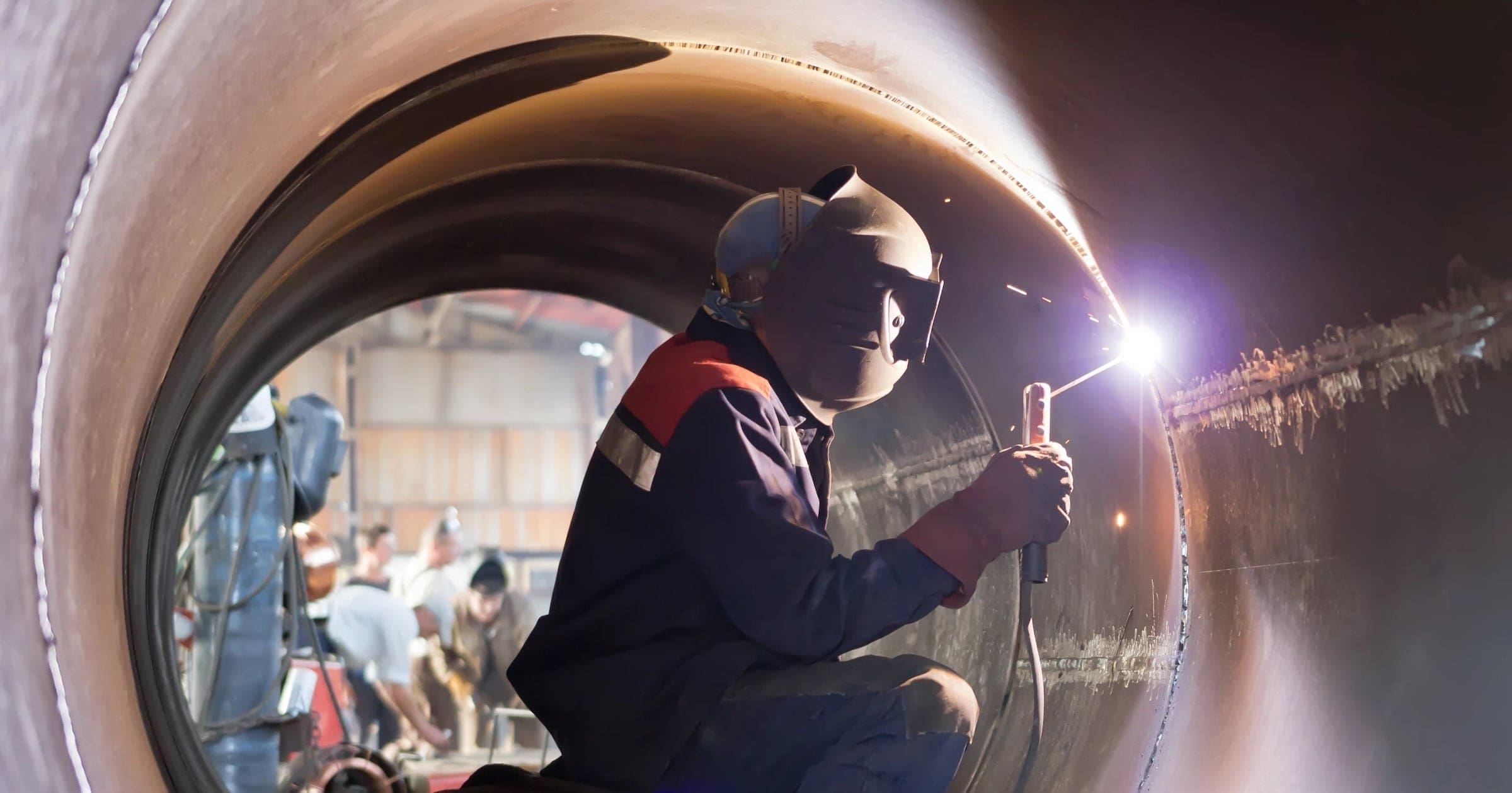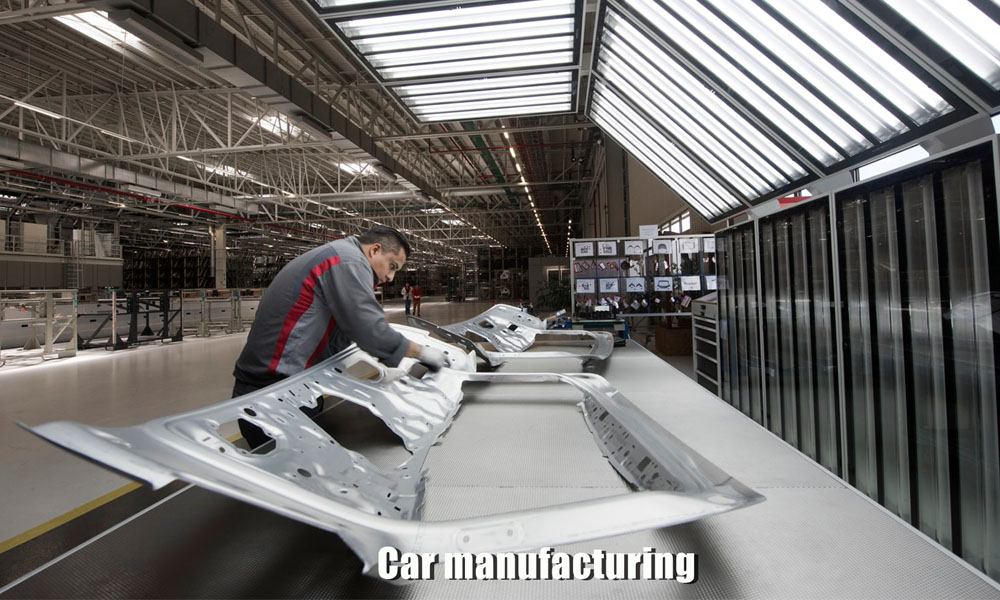Everything about Welding: Key Insights Into Techniques and Finest Practices for Success
Welding incorporates a range of techniques, each matched for details products and applications. Understanding these approaches, such as GMAW, SMAW, and TIG, is necessary for achieving perfect outcomes. Moreover, the best equipment and safety methods can not be overlooked. As preparation and repairing play crucial roles in the welding procedure, grasping these components can greatly improve the quality of the end product. What are the vital aspects that guarantee an effective weld?
Understanding Different Welding Methods
Welding techniques incorporate a selection of techniques, each matched to certain applications and materials. Amongst one of the most typical strategies are Gas Steel Arc Welding (GMAW), Secured Metal Arc Welding (SMAW), and Tungsten Inert Gas Welding (TIG) GMAW, additionally understood as MIG welding, is prominent for its rate and flexibility, making it excellent for slim materials. SMAW, or stick welding, is favored for its simplicity and performance in exterior settings, particularly with thicker metals. TIG welding offers accuracy and control, making it appropriate for elaborate job and non-ferrous steels (Welding). Each strategy has its one-of-a-kind advantages and factors to consider, allowing welders to select the ideal approach based upon the task's needs, material type, and desired outcomes. Comprehending these strategies is important for effective welding
Crucial Welding Devices and Devices
While various welding methods need details skills, the best devices and tools are equally important for attaining top quality results. Important welding tools includes welding devices, which vary depending upon the method-- such as MIG, TIG, or stick welding. Protective gear, consisting of safety helmets, aprons, and handwear covers, assurances safety and security and comfort during the procedure. In addition, fixtures and clamps aid secure products in location, making certain accuracy in welds. Consumables like welding rods, wire, and shielding gas are likewise crucial parts that influence the top quality of the weld. Moreover, tools such as grinders and cutters assist in surface area preparation and post-weld finishing, adding to an expert result. Spending in high-grade tools eventually enhances the performance and performance of welding projects.
Safety And Security Practices in Welding
Appropriate safety techniques are necessary in the welding market to secure employees from prospective risks. Welders need to put on proper individual safety equipment (PPE), consisting of headgears with proper shading, gloves, and flame-resistant apparel. Ample air flow is vital to decrease exposure to dangerous fumes and gases created during the welding process. Furthermore, employees must be learnt the appropriate handling of welding devices to avoid accidents. Fire security actions, such as maintaining flammable materials away from the welding location and having fire extinguishers readily offered, are needed. Normal evaluations of devices and offices can assist determine potential threats prior to they cause accidents. By sticking to these security techniques, welders can create a much safer working environment and reduce threats related to their profession.
Readying Materials for Welding
Preparing products for welding is a crucial action that greatly influences the top quality and integrity of the last product (Welding). Proper preparation involves cleaning up the surfaces to remove impurities such as oil, dirt, and rust, which can jeopardize the weld. Strategies such as grinding, fining sand, or making use of solvents are commonly employed to accomplish a tidy surface area. In addition, guaranteeing that the products mesh comfortably is vital; voids can lead to weak welds. It's additionally essential to consider the placement and positioning of the elements, as this will impact the convenience of welding and the final end result. Choosing the ideal filler material and guaranteeing compatibility with the base steels is vital for accomplishing strong, durable welds.
Tips for Getting High-Quality Welds
Accomplishing top quality welds calls for focus to detail and adherence to best methods throughout the welding procedure. Proper joint prep work is essential, making sure surface areas are tidy and free from impurities. Choosing the suitable filler product and welding technique based on the base metals is critical for ideal bonding. Maintaining regular travel speed and angle while welding can avoid problems and advertise uniformity. Additionally, regulating heat input is necessary; too much warm can bring about bending and compromised joints. Consistently inspecting the welds during the procedure permits instant modifications if necessary. Using ideal post-weld therapies, such as cleansing and stress and anxiety alleviation, can enhance the longevity and stability of the weld, inevitably making sure a successful result.
Fixing Common Welding Issues
Welding often provides obstacles that can impact the quality and stability of the last product. Usual issues such as porosity, irregular weld grains, and overheating can develop, each calling for specific repairing strategies. Comprehending these troubles is essential for welders to boost their abilities and attain excellent results.
Porosity Troubles Explained
Although porosity can frequently be neglected, site link it continues to be a critical problem in welding that can endanger the stability of a finished item. Porosity describes the presence of little gas pockets within the weld grain, which can deteriorate the joint and lead to early failing. This issue usually develops from pollutants, dampness, or improper securing gas protection throughout the welding process. To mitigate porosity, welders need to verify that the base products are clean and dry, utilize ideal shielding gases, and maintain regular welding parameters. Consistently checking the devices and setting can additionally help determine potential issues prior to they show up in the weld. Dealing with porosity successfully is important for attaining strong, resilient welds learn this here now that meet quality standards.

Irregular Weld Beans
Irregular weld beads can significantly impact the top quality and stamina of an ended up product. Different elements add to this problem, including inappropriate travel rate, inaccurate amperage settings, and irregular electrode angles. When the welder moves also swiftly, a grain may show up narrow and lack infiltration, while moving too slowly can trigger too much build-up. In addition, using the incorrect amperage can result in either damaging or excessive spatter, both of which concession weld stability. The welder's strategy, such as inconsistent torch activity, can likewise cause unequal grain look. To reduce these issues, welders ought to focus on maintaining steady, regulated motions and making sure appropriate equipment setups to achieve harmony in their welds. Consistency is key to achieving solid and trusted welds.
Getting Too Hot and Bending Issues
Excessive warmth throughout the welding process can cause considerable overheating and buckling problems, influencing the architectural stability of the work surface. These troubles frequently show up as distortion, which can jeopardize placement and fit-up, making further setting up challenging. Aspects contributing to overheating consist of the selection of welding criteria, such as voltage and take a trip rate, as well as the kind of material being bonded. To reduce these problems, welders should preserve constant traveling rate and proper heat input while monitoring the workpiece temperature level. In addition, preheating or post-weld warmth treatment can aid ease stress and anxieties triggered by rapid cooling - Fabrication. Regular evaluation and adherence to ideal techniques are important in avoiding overheating and making certain the longevity and integrity of welded structures
Often Asked Concerns
What Are the Job Opportunities in the Welding Market?
The welding sector offers varied occupation possibilities, including settings as welders, educators, inspectors, and designers. Experts can operate in manufacturing, construction, aerospace, and automotive sectors, more tips here gaining from solid demand and affordable incomes in various roles.
How Can I Enhance My Welding Rate Without Giving Up High Quality?
To improve welding speed without giving up top quality, one should practice effective methods, preserve devices, maximize settings, and improve hand-eye coordination. Regular training and seeking comments can additionally substantially contribute to attaining quicker, premium welds.
What Accreditations Are Available for Welders?
Many accreditations exist for welders, consisting of those from the American Welding Society (AWS), the National Center for Construction Education and Research (NCCER), and different industry-specific organizations. These qualifications improve employability and demonstrate ability effectiveness.
How Does Welding Impact the Properties of Metals?
Welding affects the properties of metals by altering their microstructure, which can bring about adjustments in hardness, toughness, and ductility. Heat input and cooling rates throughout the procedure significantly impact these material characteristics.
Can I Bonded Dissimilar Metals Together?
